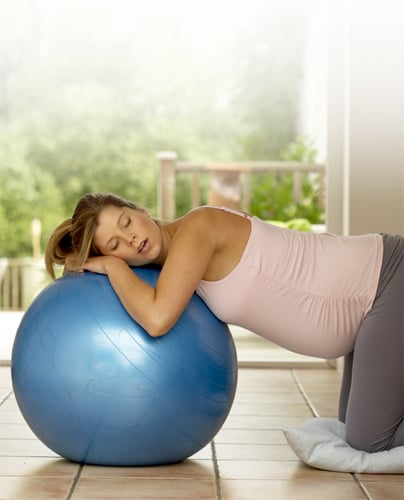Once in labor, in addition to needing emotional and
physical support, which your doctor, nurse, or midwife and birth partner
will provide, you may also need some form of pain relief to help you
cope. They will help you work with your labor pain by employing natural
methods such as breathing techniques. If you need stronger pain relief,
they’ll advise you on medical methods, such as analgesics or an epidural .
NOTE
A prior knowledge of pain relief will help you make informed choices in labor

Coping with Pain
To help you cope with labor and birth, it’s important to have an understanding of the progress of pain during labor.
Labor pain is unique and
quite different from everyday chronic and acute pain. Generally, pain is
a warning sign that something is wrong, but labor pain acts as an
“alert” that the birth process is underway and that you need a safe
environment in which to give birth. Some women prefer a homelike
environment, which has been shown to have many benefits, including
reducing the need for medical forms of pain relief. For this reason,
many labor rooms in maternity units and especially birth centers have
homey decoration and furnishings to make them feel less medicalized.
Other women need the reassurance provided by hospitals that stronger
forms of pain relief and medical backup are available.
How women react to pain
No one really knows
what starts labor and every woman’s labor is unique. Likewise, the pain
associated with labor can vary enormously between women. Some women have
relatively painless labors, while some describe the pain as moderate,
and others experience severe pain. One thing that does seem clear is
that anxiety and fear increase the levels of adrenaline, which in turn
can increase the intensity of the pain experienced. The strength of
labor pain can also be affected by factors such as your emotional state
and anticipation of labor; your previous experiences, if any; cultural
beliefs; and, in particular for first-time mothers, the fear of the
unknown. Thorough preparation prior to labor and sensitive and caring
support throughout labor and birth can help reduce anxiety and fear
considerably.
Being informed about the pain of labor can reduce your anxiety and help you manage.

Thinking ahead
The sensation of
pain is different during the different stages of labor, and as labor
progresses the intensity and duration of the pain increases. The most
effective methods of dealing with pain will also change as your labor
progresses (see Pain relief throughout labor).
The more familiar you
are with the methods of dealing with pain and with the several natural
and drug-induced methods of pain relief available (see Natural Pain Relief),
the easier it will be for you to manage during labor and birth. To make
decisions about pain relief, you will also need to understand the
changes that take place in your body during the three different stages
of labor .
Pain relief throughout labor
Your pain-relief requirements may change during labor, so it helps to be aware of when different types of pain relief can help.
Early first stage
In this phase, the cervix begins to dilate. Contractions are mild, and
you may find that natural methods, such as massage and breathing, are
helpful. If you need stronger pain relief, you may be given analgesics,
which dull pain but allow you to remain active since you won’t lose all
feeling or muscle movement.
Active first stage
The cervix now starts to dilate more quickly and contractions are
stronger and closer together. Some women are happy to continue with
natural or analgesic pain relief; others may need stronger relief and an
epidural may be given at this point (see Epidurals).
Transition
Contractions are intense and frequent as the cervix dilates fully.
Systemic (IV) analgesics aren’t usually given this close to the birth
since they could affect the baby. If you have an epidural already in
place, this can be topped off.
Second and third stages
Stage two lasts from full dilation of the cervix until birth;
contractions are strong and longer lasting, but easier to manage since
you start pushing. Analgesics may be used. In the 3rd stage, delivery of
the placenta, contractions are mild and you shouldn’t need pain relief.